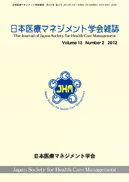Current issue
Displaying 1-10 of 10 articles from this issue
- |<
- <
- 1
- >
- >|
Review Article
-
Article type: Review Article
2020Volume 21Issue 2 Pages 58-65
Published: September 01, 2020
Released on J-STAGE: July 18, 2025
Download PDF (739K)
Original Articles
-
Article type: Original Articles
2020Volume 21Issue 2 Pages 66-69
Published: September 01, 2020
Released on J-STAGE: July 18, 2025
Download PDF (446K) -
Article type: Original Articles
2020Volume 21Issue 2 Pages 70-78
Published: September 01, 2020
Released on J-STAGE: July 18, 2025
Download PDF (1131K) -
Article type: Original Articles
2020Volume 21Issue 2 Pages 79-84
Published: September 01, 2020
Released on J-STAGE: July 18, 2025
Download PDF (1065K)
Case Reports
-
Article type: Case Reports
2020Volume 21Issue 2 Pages 85-90
Published: September 01, 2020
Released on J-STAGE: July 18, 2025
Download PDF (1891K) -
Article type: Case Reports
2020Volume 21Issue 2 Pages 91-96
Published: September 01, 2020
Released on J-STAGE: July 18, 2025
Download PDF (1104K) -
Article type: Case Reports
2020Volume 21Issue 2 Pages 97-100
Published: September 01, 2020
Released on J-STAGE: July 18, 2025
Download PDF (416K) -
Article type: Case Reports
2020Volume 21Issue 2 Pages 101-105
Published: September 01, 2020
Released on J-STAGE: July 18, 2025
Download PDF (750K) -
Article type: Case Reports
2020Volume 21Issue 2 Pages 106-109
Published: September 01, 2020
Released on J-STAGE: July 18, 2025
Download PDF (770K) -
Article type: Case Reports
2020Volume 21Issue 2 Pages 110-115
Published: September 01, 2020
Released on J-STAGE: July 18, 2025
Download PDF (848K)
- |<
- <
- 1
- >
- >|
